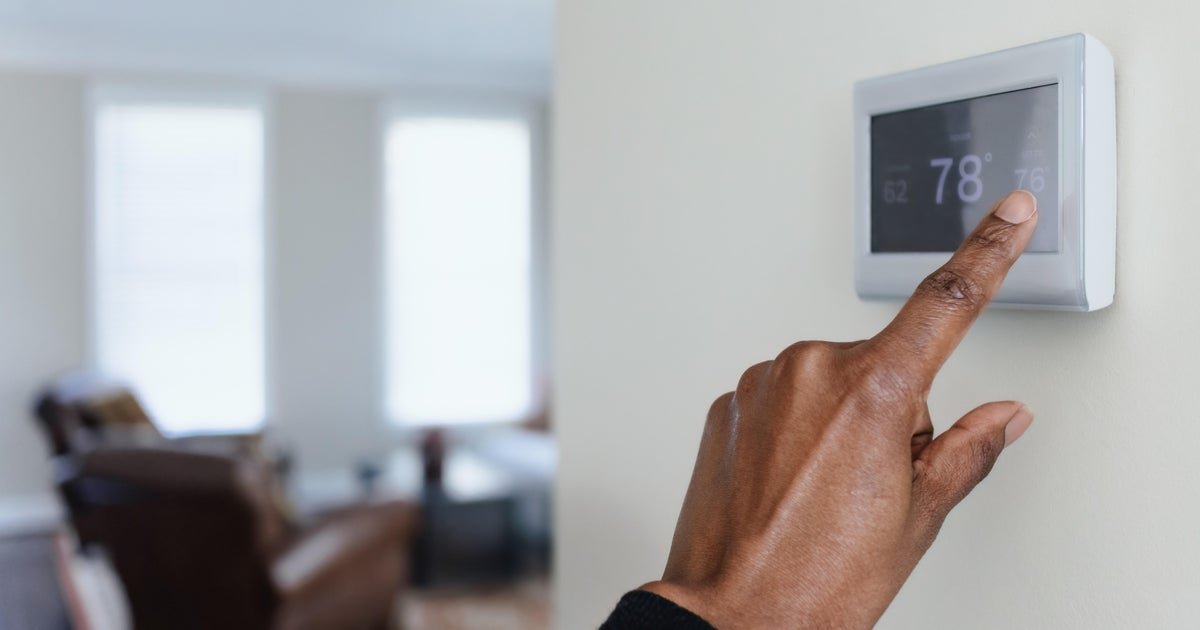[ad_1]
High temperatures projected across the U.S. summer could take a toll on Americans’ budgets by driving up the price of keeping homes cool.
Home electricity bills are expected to rise to an average of $784 for the summer period, up more than 6% from $737 in 2024 and marking a 12-year record, according a new analysis from the National Energy Assistance Directors Association (NEADA).
The growing expense comes on the heels of a cold winter that drove up heating costs for many Americans, and as consumers continue to grapple with higher prices on everyday goods. Consumers are also increasingly expressing concerns about how tariffs could affect their day-to-day costs, Gallup polling has found.
“We found that it’s going to be another expensive summer for air conditioning because temperatures will stay high, and electricity prices have been rising faster than inflation,” energy economist Mark Wolfe, executive director of NEADA, told CBS MoneyWatch.
The anticipated spike in residential electricity costs from June through September is due to the combination of rising cost of electricity, which is outpacing inflation, with higher temperatures, NEADA said. Those trends mean that households are not only expected to pay higher prices for electricity, but will likely consume more of it than they did last summer because of the need for more cooling.
“It’s not just temperatures that are going up, but the cost of cooling is going up,” Wolfe said. “And when electricity prices go up, they tend to stay high. So even if temperatures moderate, your bill might go up because of the cost of electricity.”
Unpaid bills
Energy costs eat up a larger share of low-income families’ budgets compared to higher-earners. Low-income households spend roughly 8.6% of their incomes on energy costs, compared to 3% for those that are higher up the income ladder, according to NEADA.
Worryingly, the lowest earners could struggle to afford to keep their homes cool, Wolfe noted. The most recent Census Household Pulse Survey found that 37% of low- and moderate-income households could not afford their energy bills for at least one month between April 2023 and April 2024.
If those households find themselves in a financial crunch this summer, they may opt to turn off their air conditioning, which could pose serious health risks, noted Wolfe.
“Last winter was cold, so they’re just getting over paying their heating bills, and are now facing higher summer cooling costs,” Wolfe explained. “And while people understand that if you don’t use heat in the winter, your pipes will freeze, that won’t happen in the summer.”
Reluctance to turn on one’s air conditioning can have adverse health effects like heat stroke. “While this won’t do damage to your building, it will do damage to you,” Wolfe said.
Extreme heat and health
Public assistance programs haven’t kept pace with the evolving climate, according to Wolfe. “We’re having heat waves that are lasting longer, and the systems in place to protect families have not kept up,” he said.
This summer’s cooling cost forecast should be taken as a sign that state and federal assistance programs require modernization, according to Wolfe. Only 26 states offer summer cooling assistance to help Americans pay their bills. Thirty-three states have no protections in place to prevent utilities company from shutting off customers’ access to electricity when they’re behind on payments.
Extreme heat is the leading weather-related killer in the United States, according to the National Weather Service.
Wolfe says that taking steps to modernize your home can actually help households save money. For example, adding insulation to your house can help control energy bills.
“Families should start preparing for long-term extreme weather and think about the energy efficiency of their cooling systems,” he said.
[ad_2]



